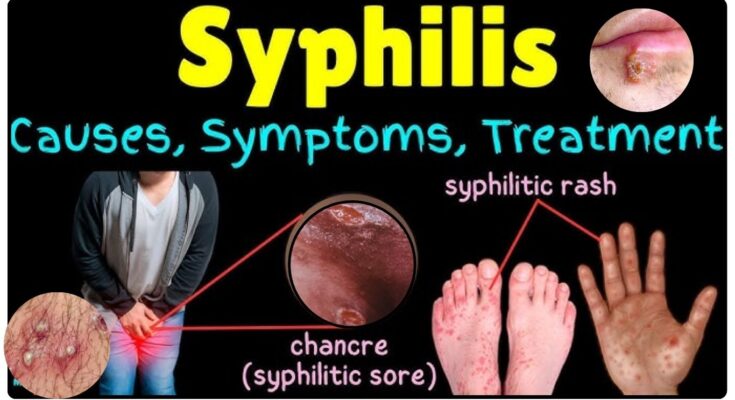You’re in the shower, and you feel it—a tender bump down there. Your heart races. Is it an ingrown hair? A pimple? Or something worse, like an STI? If that bump turns into a painful sore, it could be chancroid, a rare but nasty bacterial infection. Unlike other STIs that fly under the radar, chancroid screams for attention with ulcers that hurt, bleed, and spread fast. Let’s walk through exactly what symptoms to watch for, how to tell chancroid apart from herpes or syphilis, and why acting fast can save you from major complications.
The First Red Flags (Days 1–4)
Chancroid doesn’t waste time. Symptoms start 4–10 days after exposure. Here’s what happens early on:
- Small red bumps: You’ll notice one or more raised, pimple-like bumps on your genitals, anus, or around the mouth (if you’ve had oral sex). These bumps are often:
- Tender to the touch.
- Surrounded by red, inflamed skin.
- Itchy or burning slightly.
Don’t ignore this: Plenty of people dismiss these bumps as razor burn or a harmless rash. But if you’ve had unprotected sex recently, get checked ASAP.
Sores That Mean Business (Days 5–7)
Within 1–2 days, those bumps turn into open ulcers. Here’s what chancroid sores look and feel like:
- Painful as heck: Unlike syphilis sores (which are painless), chancroid ulcers hurt. Sitting, peeing, or even walking can feel like torture.
- Ragged edges: The sores have uneven, “jagged” borders (think: a crater instead of a smooth circle).
- Yellow-gray base: The center of the ulcer often oozes pus or blood and has a dirty, grayish color.
- Easy to bleed: Touch it, and it might bleed—a big clue it’s not just a pimple.
Where they show up:
-
- Men: Sores usually appear on the penis (foreskin, shaft, or head) or around the anus.
@renamalikmd Part 2 of the STI series – Gonorrhea – What are there symptoms in both men and women?! #sociallytransmitteddisease #sexuallytransmittedinfection #sexuallytransmitted #urology #renamalikmd
- Women: Ulcers can form on the vulva, vagina, cervix, or anus. They’re harder to spot internally, so pain during sex or peeing might be your first sign.
Swollen Lymph Nodes – The Groin Alarm (Days 7–14)
About 50% of people get a painful side effect: swollen lymph nodes in the groin. These lumps (called buboes) mean your immune system is fighting the infection. Here’s what to know:
- Location: One or both sides of the groin.
- Size: Can grow as big as a golf ball.
- Pain level: Tender to the touch. Some people can’t even wear tight pants.
- Abscess risk: If untreated, these nodes can fill with pus and burst through the skin. Yes, it’s as gross as it sounds.
Chancroid vs. Other STIs: How to Tell Them Apart
Mistaking chancroid for herpes or syphilis is easy. Use this cheat sheet:
| Symptom | Chancroid | Herpes | Syphilis |
|---|---|---|---|
| Sore Pain | Extremely painful | Painful/tingling | Painless |
| Sore Appearance | Ragged, yellow-gray | Blisters that crust | Smooth, round |
| Lymph Nodes | Swollen, painful | Sometimes swollen | Firm, rubbery |
| Fever/Fatigue | Rare | Common | Occasional (later stages) |
Real-life example:
- Herpes starts with itchy blisters that pop and scab.
- Syphilis begins with a single, painless sore (chancre).
- Chancroid skips blisters and goes straight to angry ulcers.
“But I Don’t See Sores!” Hidden Symptoms You Might Miss
Chancroid can be sneaky:
- Internal sores (women): Sores inside the vagina or cervix aren’t visible. Look for:
- Pain during sex.
- Unusual vaginal discharge.
- Bleeding after sex.
- Mouth sores: Rare, but possible if you’ve had oral sex. They mimic canker sores but hurt more.
- No symptoms (rare): Some people carry the bacteria without sores but can still spread it.
When to See a Doctor: Don’t Play the Waiting Game
Go to a clinic ASAP if:
- Sores last longer than a week.
- You have swollen, painful lymph nodes.
- You’ve had unprotected sex with someone who has symptoms.
What happens at the appointment:
- Physical exam: The doctor checks your sores and lymph nodes.
- STI tests: Swabs of the sore (to find the bacteria) + blood tests for syphilis/HIV.
- Treatment: Antibiotics (usually azithromycin or ceftriaxone) to kill the infection.
Pro tip: Avoid sex until sores fully heal (about 2 weeks post-treatment).
What Happens If You Ignore Chancroid?
Waiting too long can lead to:
-
- Giant ulcers: Sores merge into larger wounds, increasing infection risk.
- Scarring: Permanent damage to genital tissue.
- HIV vulnerability: Open sores = easy entry for HIV.
- Spread to partners: You’re contagious until treated.
FAQs: Quick Answers to Shame-Free Questions
Q: Can chancroid go away on its own? A: Nope. It needs antibiotics. Untreated, it gets worse. Q: Do condoms prevent chancroid? A: Mostly. But sores outside the condom area (like pubic skin) can still spread it. Q: Can I get chancroid from oral sex? A: Yes, if there’s mouth-to-sore contact. Q: How long until symptoms show up? A: 4–10 days post-exposure. Mark your calendar if you’re worried.
The Bottom Line: Knowledge = Power
Chancroid isn’t subtle—it’s a fire alarm for your nether regions. If you spot painful sores, swollen nodes, or have risky sex recently:
-
- Stop having sex.
- Call a doctor or clinic (Planned Parenthood offers confidential care).
@gastriya Síntomas de Clamidia y cómo prevenir esta enfermedad #nutriya #clamidia #saludybienestar #chlamydia #prevencion #remediosnaturales #medicinanatural
- Tell your partners (yes, it’s awkward, but necessary).
Remember: STIs don’t care about shame. Getting treated is brave, smart, and 100% worth it.





One Comment on “What Are the Symptoms of Chancroid? Spotting the Signs Before It Gets Worse”